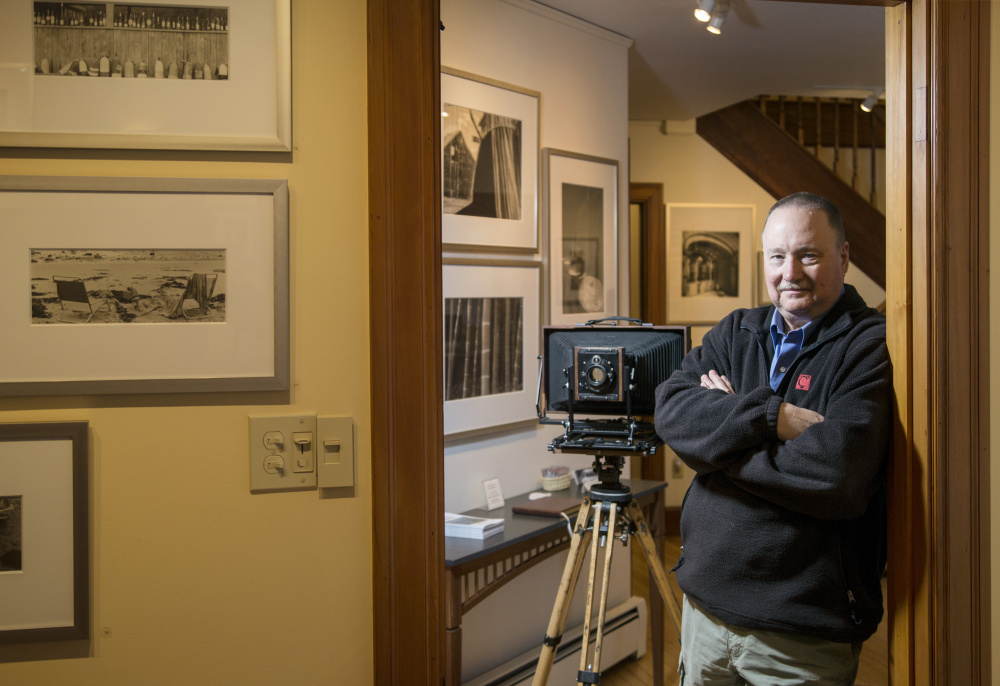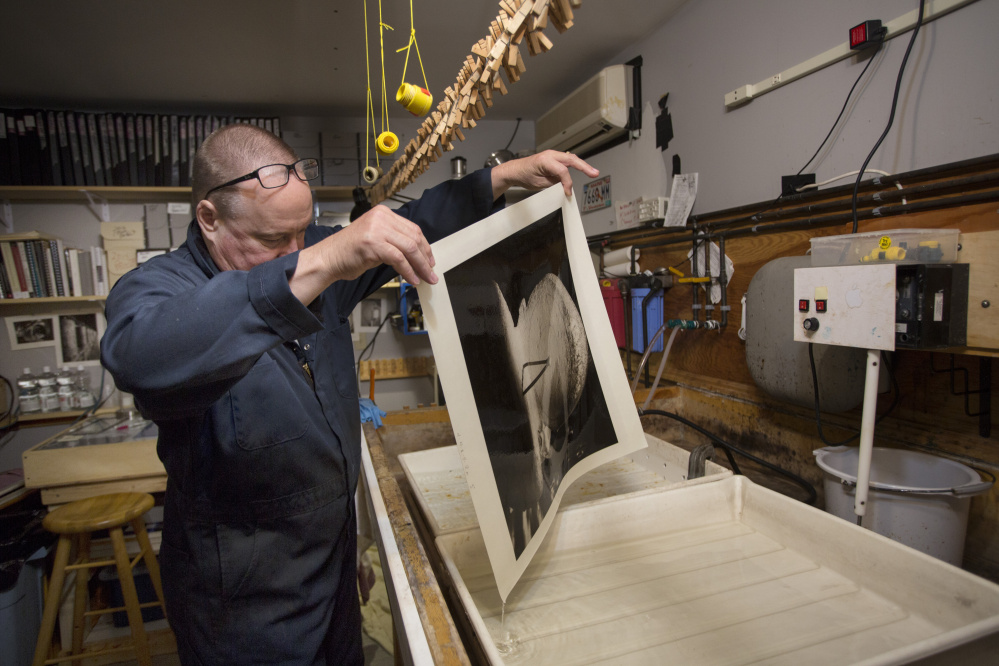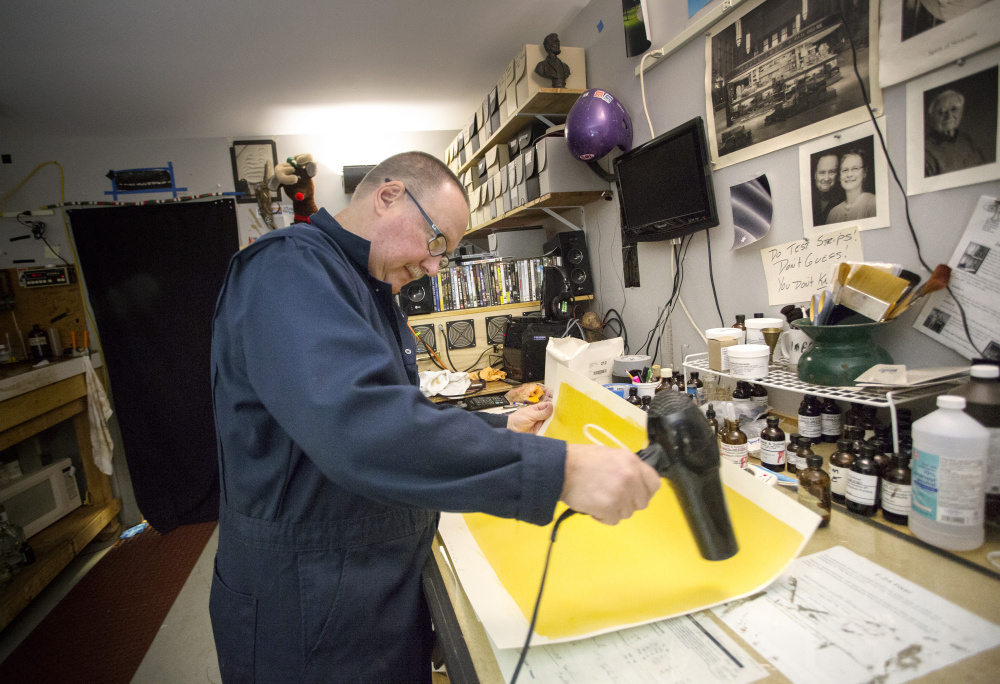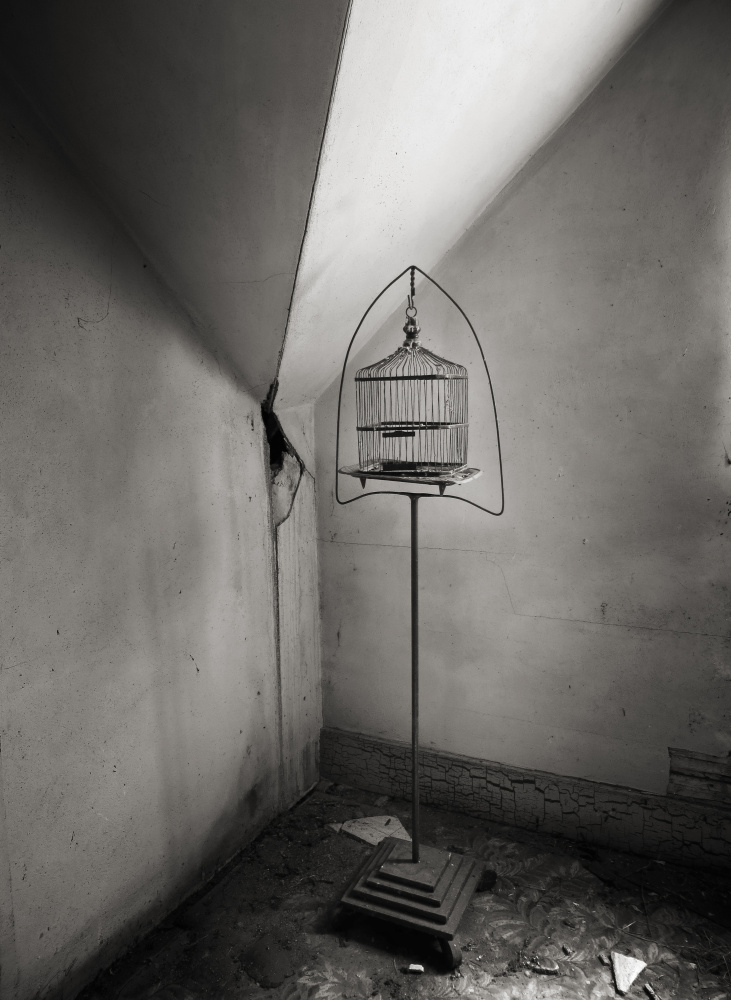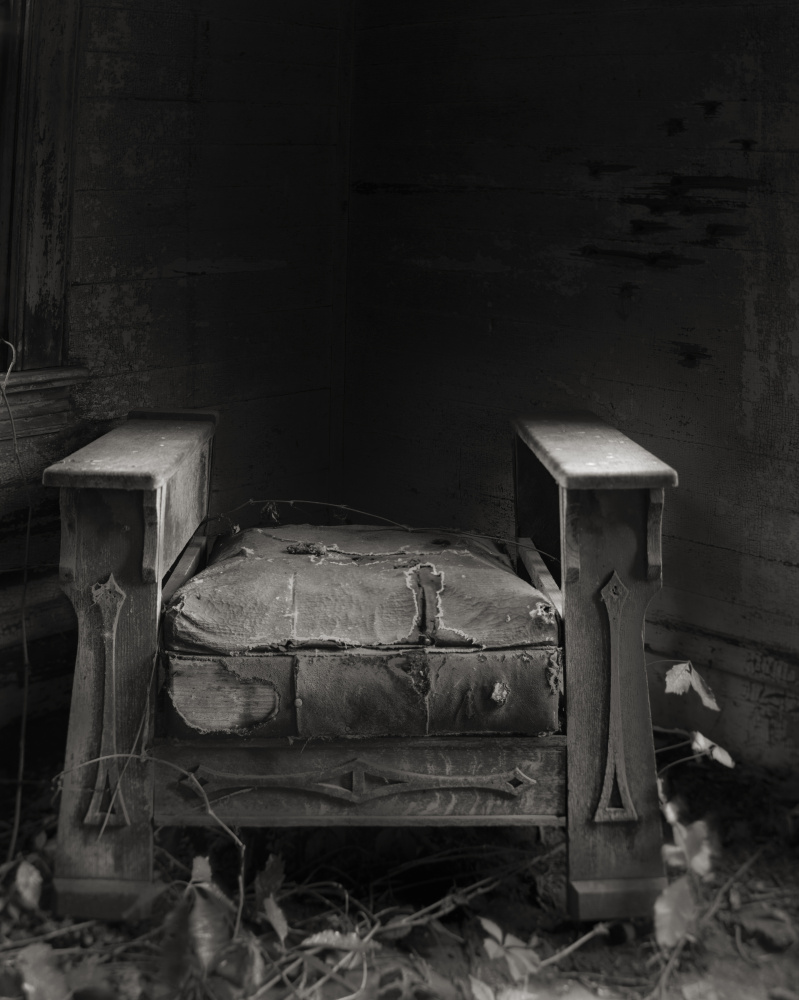CAMDEN — Tillman Crane prefers making photographs in buildings that predate electricity. Old buildings were designed with large windows to allow natural light inside. “And you give me window light, I will find a photograph,” he said.
Regardless of his subject – a building, a tree, a machine – it’s the light that Crane is interested in capturing. It’s elusive, transitory and moody.
Instinctively, he’s known that for many years, probably since he began his career as a photojournalist in Tennessee in the 1970s, when newspapers began adding color photographs to their pages. But it really hit home after he moved to Maine, when the Farnsworth Art Museum in Rockland hired him to photograph the Olson House in Cushing after the museum acquired the property in the early 1990s. The painter Andrew Wyeth made the house into an iconic American image when he used it as a setting for his best-known painting, “Christina’s World.”
For one winter, the Farnsworth gave Crane a key to the house and told him he could take photographs whenever he wanted. That’s when he noticed the light. At the Olson House, it comes in through the windows, reflects off the floor and onto the walls and ceilings, creating shapes and shadows. It’s a presence, every bit as much as Christina and her family, who occupied the place when Wyeth painted there. “It gives you an unconscious, otherworldly feeling,” Crane said. “There is something different going on there.”
It’s almost like a ghost.
Now 61, Crane long ago stepped away from his newspaper career. He came to Maine for the first time in 1981, to take a summer class at what is now Maine Media Workshops in Rockport. He made a deal with his editor in Tennessee to share the cost of the class. Every summer, he came to Maine for two weeks, until one year, he decided to stay. That was in 1987. “Where else would you want to live?” he asked. “I love Maine. When I first came here in 1981, I called a friend back home and said, ‘If I could live anywhere in the world, this is where it would be.'”
He and his wife, Donna, live in Camden, where they operate a gallery in their home dedicated to Crane’s photographs.
Crane, who recently showed about 100 black-and-white prints at the National Art Museum of China in Beijing, is known as much for his photographic techniques as his photos. He makes platinum/palladium prints. It’s a historic printing process that he learned in Rockport at the side of the photographer George A. Tice, who hired Crane as a teaching assistant in 1987. Crane enjoyed being in the darkroom, and Tice, a Guggenheim fellow whose photos are in the collections of many major U.S. museums, appreciated the opportunity to share his knowledge with someone so willing to learn. He took one of Crane’s negatives and made a palladium print with it to demonstrate the technique and the results. “It was really beautiful, really remarkable,” Crane said.
Soon, Crane began processing all of his prints that way. The platinum/palladium printing process distinguished his work and led to teaching opportunities worldwide. He now makes much of his living teaching others how to make platinum prints, including in China, where he has traveled five times in the past three years to teach workshops. He’s also taught in Scotland and Japan, and across the United States.
Platinum prints are known for their soft beauty and their archival stability. They look different from silver prints. They’re softer, and have a wider gray scale – there are more steps between pure white and pure black, which means more potential to highlight the intermediate tones that create depth and the gentle mood of his photos.
Though he works in black and white, he creates a range of color, from purple-black to split tones of brown and warm black to deep brown. Those colors are achieved in the printing process, which Crane handles in his studio darkroom. He works by hand, mixing chemicals with precision and spreading the mixture over paper as a painter might apply paint to canvas.
Crane shoots mostly with view-finder cameras, ranging from 5-by-7 to 11-by-14 inches. He recently incorporated digital cameras into his practice, but his specialty is working with a view camera – a large, clunky beast – because it forces him to work slowly. He can use one sheet of film at a time, and must take the time to set and compose his image, accounting for multiple factors and variations that affect the image.
Working with a view camera is a form of meditation, he said. It forces him to relax and work within himself. “The many physical and mental steps necessary to make a nice image mean setting up (the camera) is almost ritualistic,” he said. That ritual frees his mind to focus on the subject.”
Crane describes himself as a reactionary photographer as opposed to a conceptual photographer. He reacts to the light. He is attracted to buildings because of the way light plays with the corners, windows and doors, and how those architectural elements create shadows and bend and shape the light. “Everything I do is about the elusive quality of light,” he said.
Crane’s biggest fan in Maine, and his most faithful advocate, is Bruce Brown, the former curator of the Center for Maine Contemporary Art. Brown included Crane’s photographs in the first exhibition he curated at CMCA in 1988 and has curated him into many other exhibitions since.
“You don’t forget his photographs. Once you see them, they stay with you forever because of the great clarity and the straightforwardness of what he does,” Brown said. “I think he is able to accomplish that because of all kinds of things. He knows photography inside out. He knows cameras inside out. He knows techniques inside out. He does a little of everything. But in the end, photography is the art of light. Tillman gets it. It’s just a play of dark and light, whether he is working outdoors or working indoors.”
Brown’s favorite photo of Crane’s is an image of the marble staircase at Portland City Hall, which Crane shot from above, looking down at the staircase as it begins to bend up the wall. Brown likes that photo because of the shape, its sense of architecture and the suggestion of human presence.
Crane takes many photos in Maine, but they’re not the iconic images of Maine we’re used to seeing. He doesn’t take photos of lobster boats or buoys. “Don’t get me wrong, there are people who do lobster boats and dinghies and lobster pots beautifully. I can’t,” he said. “A lot of that is color anyway, so it just doesn’t naturally fall into what I do.”
He’s taken photos of Portland City Hall, the Olson House, Winslow Homer’s studio at Prouts Neck and up and down the midcoast. One of his favorite Maine photos is one he calls “Bella’s Tree,” which shows a small, curved cedar tree that Crane and his wife passed on their daily walk with their dog, Bella.
He likes working on long-term projects in places where he can return year after year and in different seasons. He’s in the midst of a several-years effort to take pictures along the Erie Canal in upstate New York. He tackles a different section of the canal each year, leading workshops with students along the way. He has access to the old pump houses and enjoys taking photos of the early-20th-century mechanics and technologies.
He also leads workshops in North Dakota, where he take students to dozens of abandoned farmhouses and other decaying buildings, and in Alabama, where he grew up. Just before going to China in December for an exhibition in Beijing, Crane was inducted into the inaugural class of the Alabama Center for the Arts Hall of Fame, in Decatur, Alabama, his hometown. Among the other inductees was country music singer Emmylou Harris. The honor, he said, was humbling. “The last thing you expect is to be acknowledged in your hometown.”
Everything changed for Crane when he came to Maine. He was a young journalist, seeking to improve his skills. What he found when he got here was a pathway to a career in art. He sustains himself by selling prints, making limited-edition books of his projects and teaching workshops.
Michael Komanecky, curator at the Farnsworth, is arranging a series of exhibitions at the Rockland museum that will celebrate the 100th birthday of Andrew Wyeth in 2017. The museum has a half-dozen exhibitions planned, including one of photographers who have chosen the Olson House as a subject. Crane’s Olson house images will be a big part of that exhibition, Komanecky said. It opens in April.
Crane was the first photographer to have access to the house after the museum acquired it in 1991. It was privately owned before the museum’s ownership, and had undergone extensive renovations from the time that Wyeth painted there.
What you see today, Komanecky said, is a shadow of the way the Olson family lived there.
But for Crane, a shadow is all he needs.
Send questions/comments to the editors.


